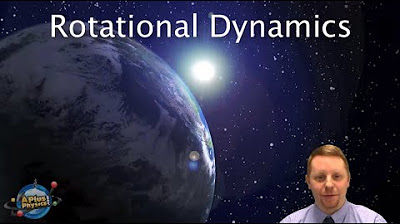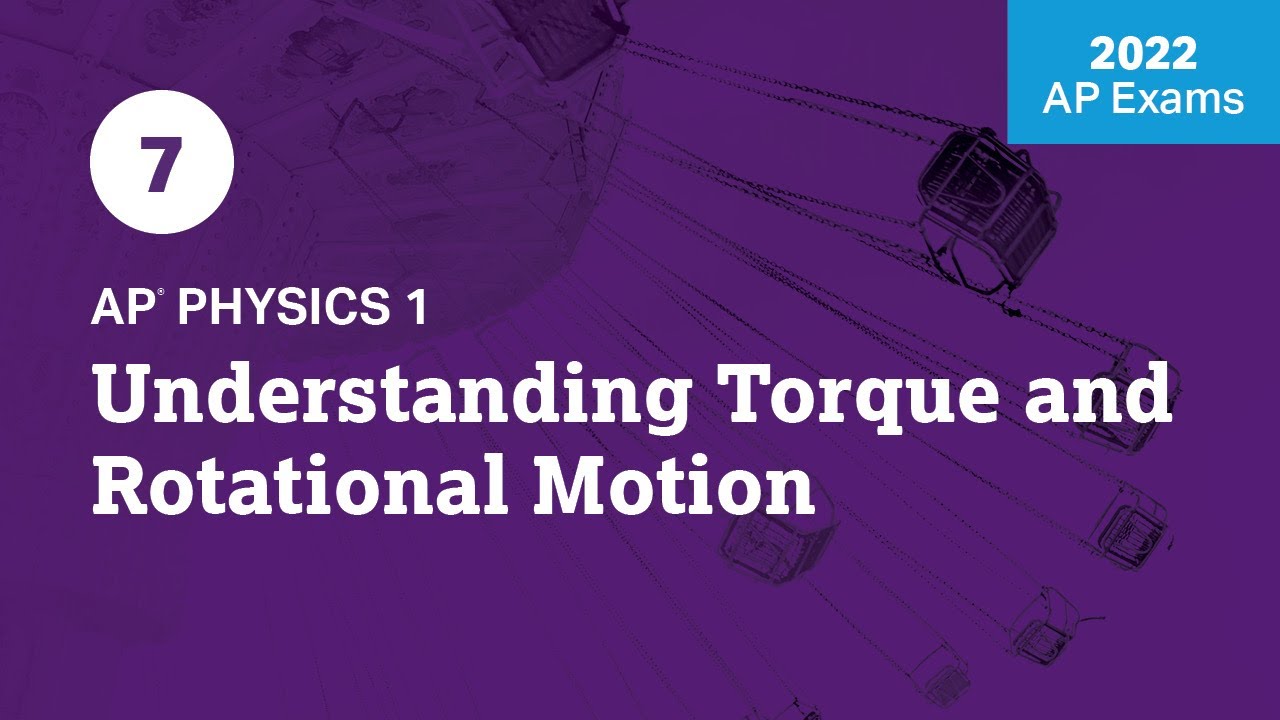Torque: Crash Course Physics #12
TLDRThis video explains torque and rotational motion concepts like angular acceleration, moment of inertia, and angular momentum. It shares how torque is calculated and how it is analogous to force in causing rotational acceleration. Moments of inertia for various objects are discussed. Finally, it analyzes a hypothetical physics experiment racing a box, ring, and marble down a ramp to see which reaches the bottom first based on their potential and kinetic rotational energies.
Takeaways
- 😀 Torque changes an object's angular velocity - it makes things rotate faster or slower.
- 🧠 The net torque on an object equals its angular acceleration times its moment of inertia.
- 💡 An object's moment of inertia relates to how its mass is distributed relative to its axis of rotation.
- 🔧 Torque is equal to the perpendicular force times the radius from the axis of rotation.
- 🚀 When objects slide down a ramp, all their energy goes into translational motion - so they reach the bottom fastest.
- ⚖️ Angular momentum, like linear momentum, is always conserved.
- ⚙️ Torques, like forces, can do work by changing the kinetic energy of rotational motion.
- 🏁 In the ramp race, the box (which slides) wins, then the marble, then the ring (which both roll).
- 🎯 The marble beats the ring because its smaller moment of inertia means more kinetic energy goes into velocity.
- 📊 The masses of the objects don't affect the race results - only how the energy is distributed as they move.
Q & A
What is torque and how does it relate to rotational motion?
-Torque is a force that causes rotation. It changes an object's angular velocity by applying a force perpendicular to the axis of rotation. The relationship between torque and rotational motion is similar to the relationship between force and linear motion.
How is moment of inertia calculated?
-Moment of inertia is calculated by summing the mass of each point in an object multiplied by the square of its distance from the axis of rotation. The farther the mass is distributed from the axis, the higher the moment of inertia.
What happens to potential energy as objects slide down a ramp?
-As objects slide down a ramp, their gravitational potential energy gets converted into kinetic energy. For objects that only translate without rotating, all of this energy becomes translational kinetic energy.
Why does the box reach the bottom of the ramp first?
-The box reaches the bottom first because all of its energy goes into translational kinetic energy. For the marble and ring, some energy goes into rotational kinetic energy, slowing their descent.
What is angular momentum?
-Angular momentum is the product of an object's moment of inertia and its angular velocity. Like linear momentum, angular momentum is always conserved.
Why does the marble beat the ring down the ramp?
-The marble has a lower moment of inertia than the ring, so more of its energy can go into translational kinetic energy rather than rotational kinetic energy. This allows it to move faster.
How does torque relate to work?
-Torque can do work just like forces do. The work done by a torque is the integral of the torque over a certain angle, similar to how work done by a force is the integral of the force over a distance.
What factors affect the amount of torque produced?
-The main factors affecting torque are: 1) the force applied, 2) the distance from the axis of rotation (radius), and 3) the angle between the force and the radius. More force, longer radius, and more perpendicular angle give more torque.
What is the relationship between torque and angular acceleration?
-Net torque on an object is equal to its angular acceleration times its moment of inertia, similar to how net force equals mass times acceleration.
How is rotational kinetic energy calculated?
-The kinetic energy of rotational motion is equal to 1/2 the moment of inertia times the angular velocity squared. This is analogous to 1/2mv^2 for translational kinetic energy.
Outlines
📋 Calculating Torque and Understanding Rotational Motion
This paragraph introduces key concepts related to rotational motion including torque, moment of inertia, angular momentum and angular velocity. It explains how torque is calculated using force, radius and angle. It also draws parallels between rotational and translational motion, noting how net torque affects angular acceleration similar to how net force affects linear acceleration.
🏁 Applying Concepts to Analyze Objects Racing Down a Ramp
This paragraph applies the concepts covered to analyze what would happen if a box, marble and ring rolled down a ramp starting from rest. It explains how potential energy is converted to kinetic energy, but some becomes rotational kinetic energy for the rolling objects. Their moments of inertia affect how quickly they reach the bottom. The box with only translational motion wins, followed by the marble which has less moment of inertia than the ring.
Mindmap
Keywords
💡torque
💡moment of inertia
💡angular acceleration
💡angular momentum
💡angular velocity
💡rotational kinetic energy
💡translational kinetic energy
💡gravitational potential energy
💡friction
💡conservation of energy
Highlights
First significant research finding
Introduction of innovative methodology
Key conclusion and practical application
Transcripts
Browse More Related Video

Rotational version of Newton's second law | Physics | Khan Academy

College Physics 1: Lecture 25 - Moment of Inertia and Rotational Dynamics

AP Physics 1 review of Torque and Angular momentum | Physics | Khan Academy

AP Physics 1 - Rotational Dynamics

2022 Live Review 7 | AP Physics 1 | Understanding Torque and Rotational Motion

2023 AP Physics 1 Free Response #4
5.0 / 5 (0 votes)
Thanks for rating: